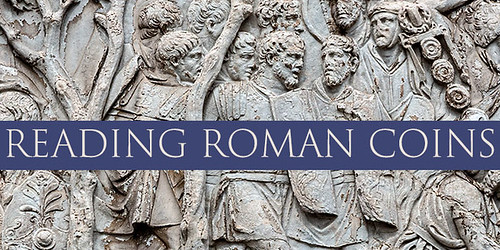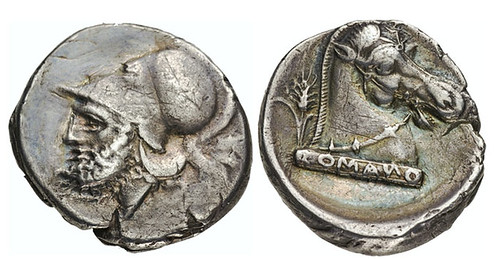
PREV ARTICLE
NEXT ARTICLE
FULL ISSUE
PREV FULL ISSUE
READING ROMAN COINSIn October Mike Markowitz published a very useful CoinWeek article on reading inscriptions and dates on ancient Greek coins. This week he published a companion article on ancient Roman coins. Here's an excerpt - see the complete article online. -Editor 
ANCIENT ROMANS WERE practical-minded people; they didn't like wasted effort. Every letter on an ancient Roman coin die was painstakingly engraved by hand, so inscriptions on Roman coins are often heavily abbreviated. Generations of classical scholars have toiled to unravel the meaning of these cryptic abbreviations, so we can usually understand what the coins are trying to tell us. Still, modern collectors are accustomed to a lot of specific information on a coin: the name of the country or issuing authority, the coin's denomination, the date of issue, the mintmark, and perhaps a motto (such as E PLURIBUS UNUM – "out of many, one" – on American coins). Such information is usually missing on ancient coins. And, to complicate things, Roman inscriptions were usually written without spaces between words. This article will consider a dozen coins issued across the long span of Roman history, to sample the enormous diversity of inscriptions.
ROMANO 
Anonymous. Circa 300/280-276 BCE. AR Didrachm (21mm, 7.12 g, 2h). Uncertain (Neapolis?) mint. Helmeted head of Mars left; oak spray to right / Horse's head right, wearing a bridle, on the base is inscribed ROMANO; stalk of grain to left. Crawford 13/1; Burnett 18 (Oc/R12); Sydenham 1; RSC 4. Classical Numismatic Group > Auction 112 11 September 2019 Lot: 465. Realized: 5,000 USD The Romans also borrowed the idea of coinage from their neighbors, the Greek cities of southern Italy. Like many ancient Greek coins, one of the earliest Roman silver coins bears a single word, ROMANO, on a raised tablet below a horse head on the reverse, abbreviating the Latin ROMANORUM (literally, "of the Romans"). The "N" in the inscription is backward, suggesting that the engraver might have been unfamiliar with letters. The obverse shows a helmeted head of the war god, Mars. This coin, a didrachm of about seven grams, dates from about 300-276 BCE. It was possibly struck at Neapolis (modern Naples). It brought $5,000 USD in a recent US auction. On many examples of this type, the word ROMANO is nearly worn off.
Reading the Romans There are also some excellent online resources for researching ancient Roman coin inscriptions–these include CoinArchives, ACSearch, Wildwinds, and OCRE. We hope to explore these, and others, in a future article.
To read the complete article, see:

Wayne Homren, Editor The Numismatic Bibliomania Society is a non-profit organization promoting numismatic literature. See our web site at coinbooks.org. To submit items for publication in The E-Sylum, write to the Editor at this address: whomren@gmail.com To subscribe go to: https://my.binhost.com/lists/listinfo/esylum All Rights Reserved. NBS Home Page Contact the NBS webmaster 
|